Abstract
The effects of different organic substrates on the abilities of anaerobic sediment enrichments to reductively dechlorinate polychlorinated biphenyls (PCBs) were studied. Sediments collected from a site previously contaminated with PCBs were dosed with additional PCBs (Aroclor 1242; approximately 300 ppm [300 μg/g], sediment dry weight) and incubated anaerobically with acetate, acetone, methanol, or glucose. The pattern of dechlorination was similar for each substrate-fed batch; however, the extents and rates of dechlorination were different. Significant dechlorination over time was observed, with the relative rates and extents of dechlorination being greatest for methanol-, glucose-, and acetone-fed batches and least for acetate-fed batches. Dechlorination occurred primarily on the meta- and para- positions of the highly chlorinated congeners, resulting in the accumulation of less-chlorinated, primarily ortho-substituted products. No significant dechlorination was observed in incubation batches receiving no additional organic substrate, even though identical inorganic nutrients were added to all incubation batches. In addition, dechlorination was not observed in autoclaved controls that received substrate and nutrients.
Full text
PDF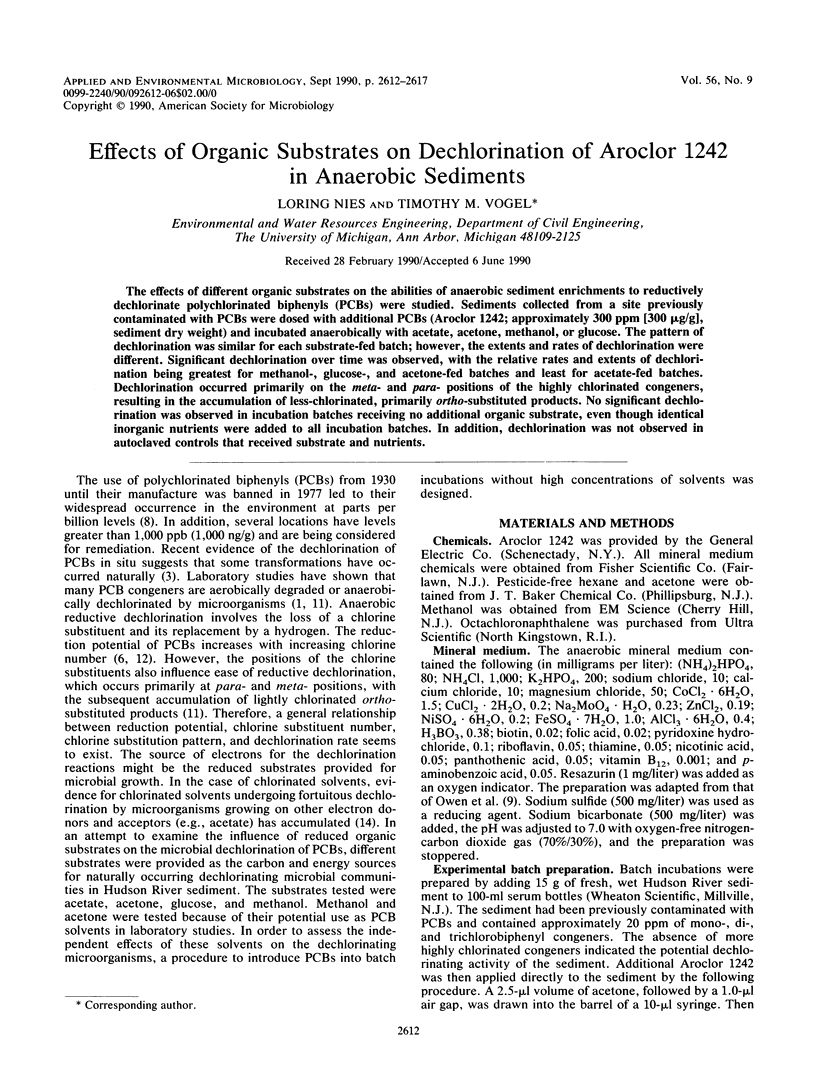

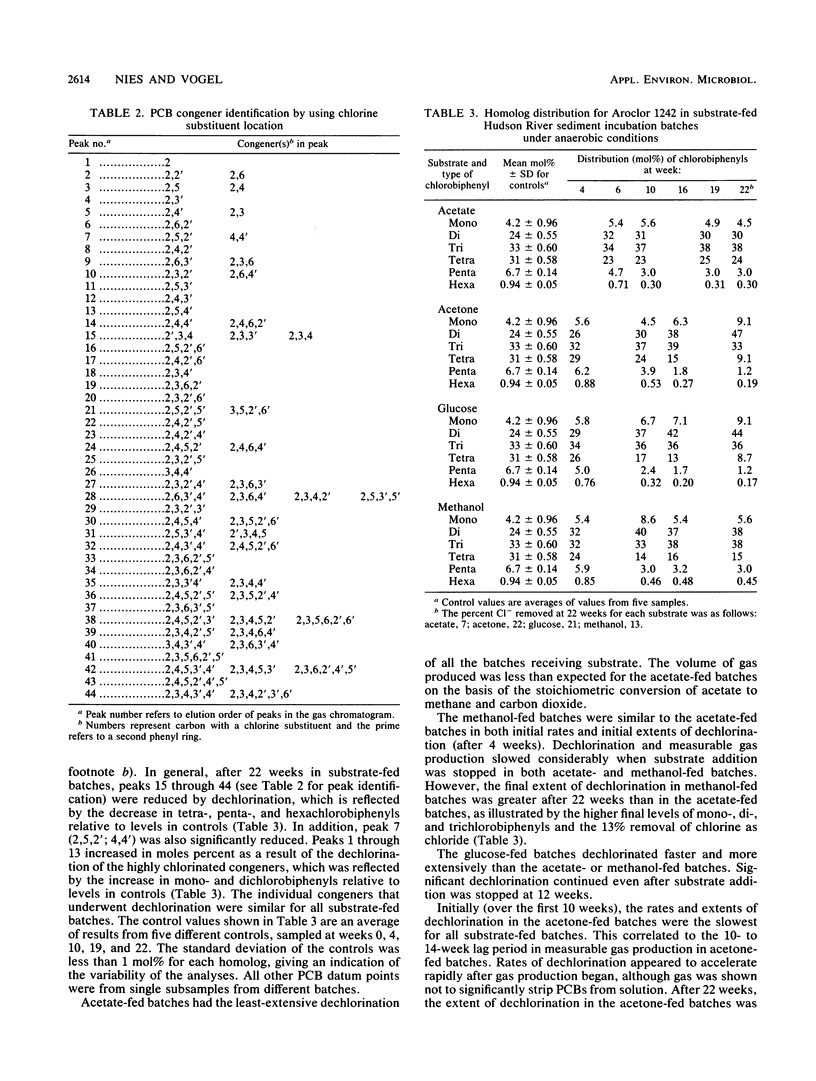
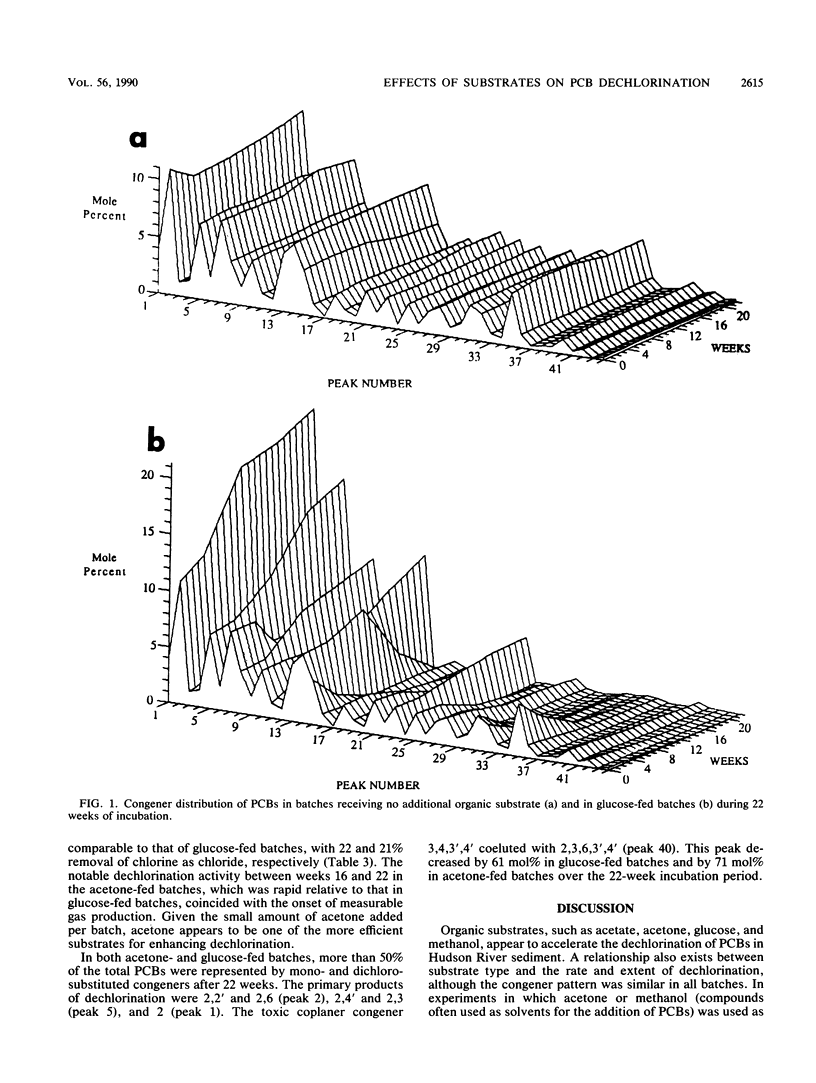
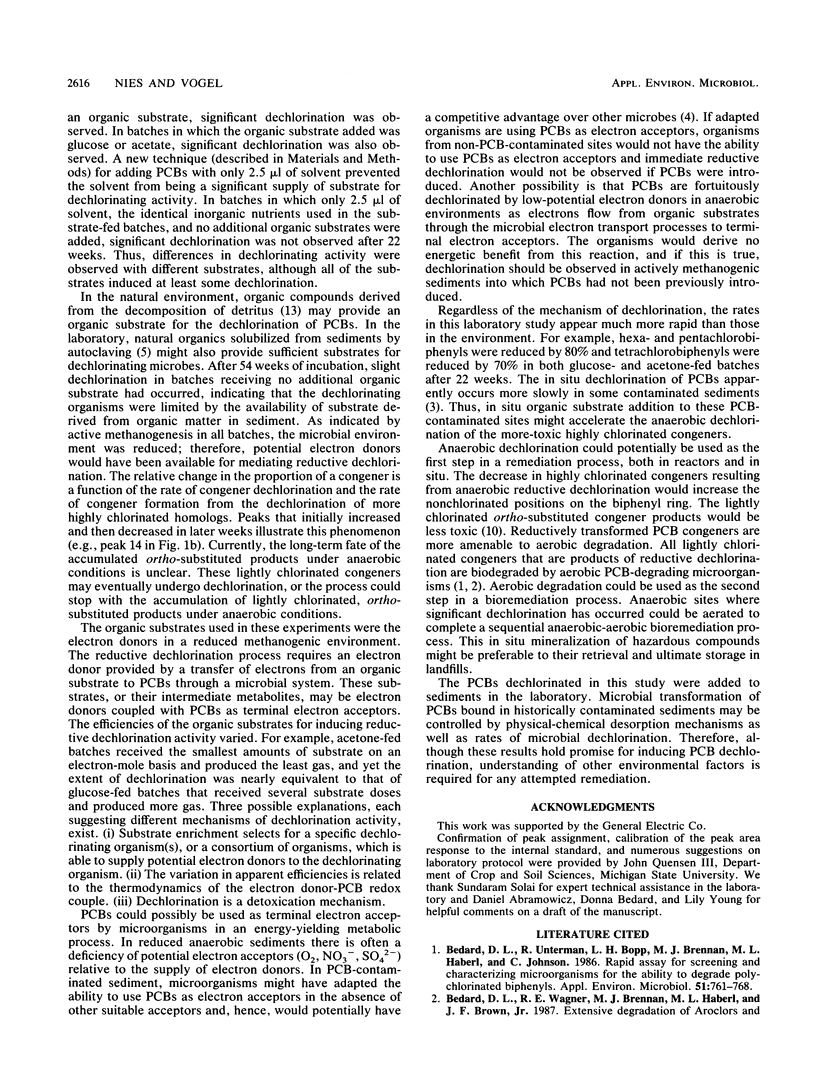
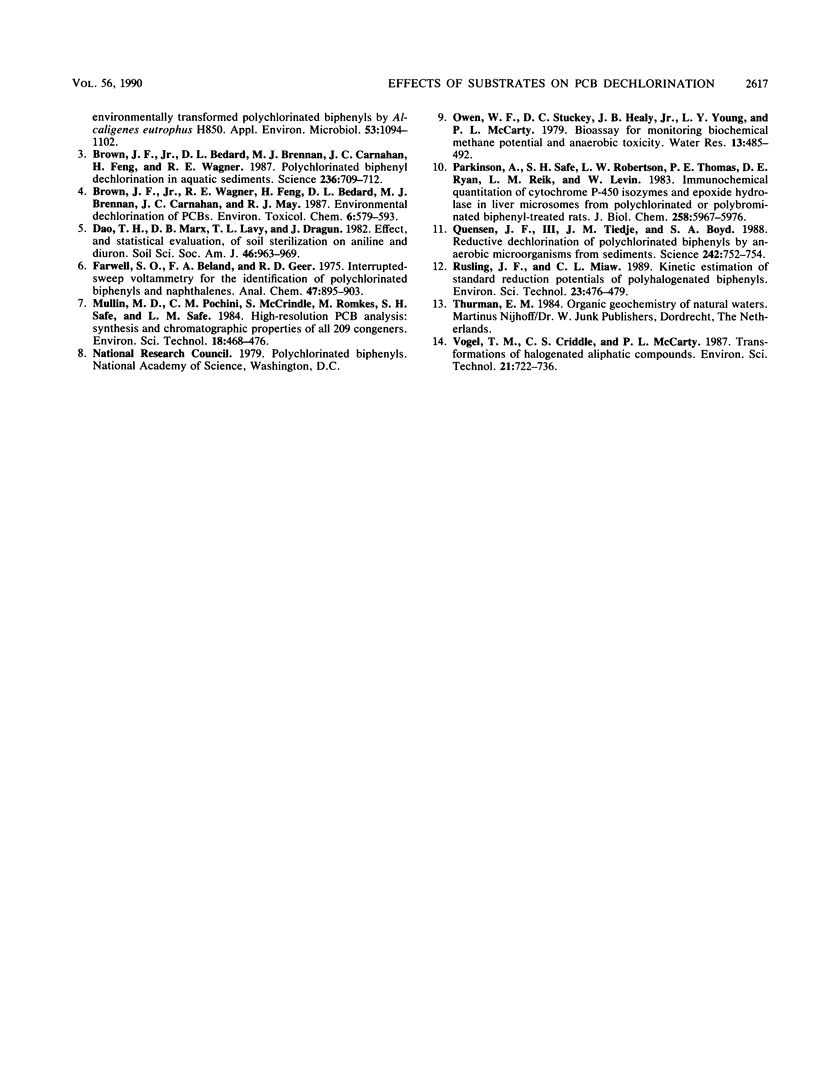
Selected References
These references are in PubMed. This may not be the complete list of references from this article.
- Bedard D. L., Unterman R., Bopp L. H., Brennan M. J., Haberl M. L., Johnson C. Rapid assay for screening and characterizing microorganisms for the ability to degrade polychlorinated biphenyls. Appl Environ Microbiol. 1986 Apr;51(4):761–768. doi: 10.1128/aem.51.4.761-768.1986. [DOI] [PMC free article] [PubMed] [Google Scholar]
- Bedard D. L., Wagner R. E., Brennan M. J., Haberl M. L., Brown J. F., Jr Extensive degradation of Aroclors and environmentally transformed polychlorinated biphenyls by Alcaligenes eutrophus H850. Appl Environ Microbiol. 1987 May;53(5):1094–1102. doi: 10.1128/aem.53.5.1094-1102.1987. [DOI] [PMC free article] [PubMed] [Google Scholar]
- Brown J. F., Jr, Bedard D. L., Brennan M. J., Carnahan J. C., Feng H., Wagner R. E. Polychlorinated biphenyl dechlorination in aquatic sediments. Science. 1987 May 8;236(4802):709–712. doi: 10.1126/science.236.4802.709. [DOI] [PubMed] [Google Scholar]
- Parkinson A., Safe S. H., Robertson L. W., Thomas P. E., Ryan D. E., Reik L. M., Levin W. Immunochemical quantitation of cytochrome P-450 isozymes and epoxide hydrolase in liver microsomes from polychlorinated or polybrominated biphenyl-treated rats. A study of structure-activity relationships. J Biol Chem. 1983 May 10;258(9):5967–5976. [PubMed] [Google Scholar]
- Quensen J. F., 3rd, Tiedje J. M., Boyd S. A. Reductive dechlorination of polychlorinated biphenyls by anaerobic microorganisms from sediments. Science. 1988 Nov 4;242(4879):752–754. doi: 10.1126/science.242.4879.752. [DOI] [PubMed] [Google Scholar]


